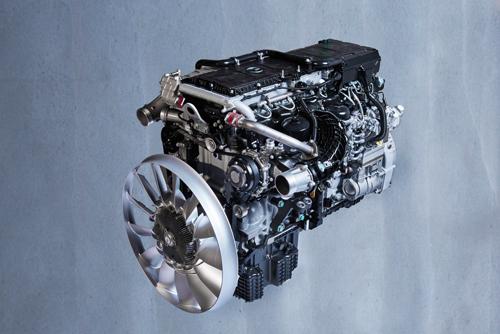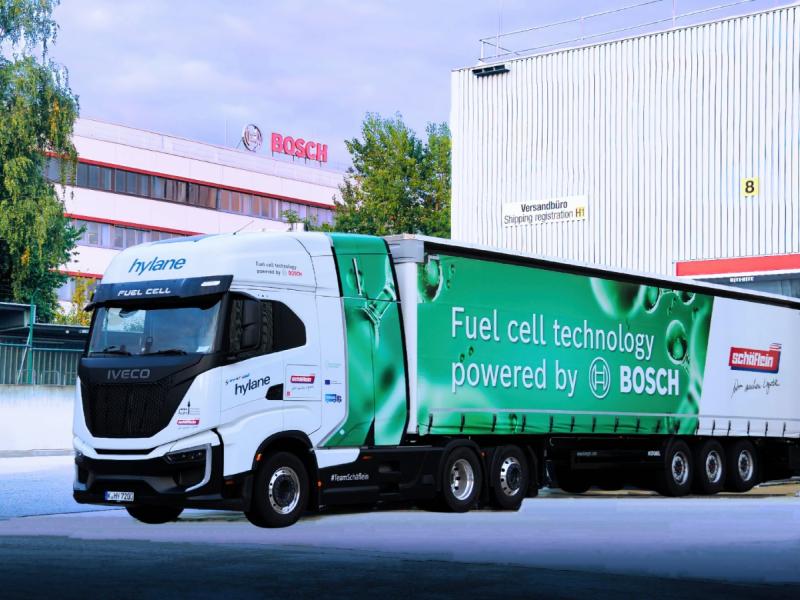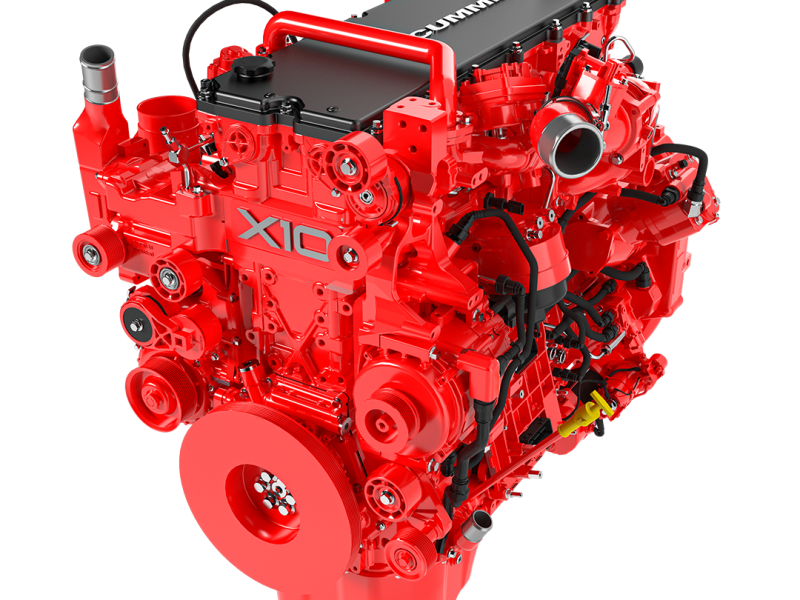As part of its ”Shaping Future Transportation 2015 – Campus Efficiency” event in July, Mercedes-Benz presented the latest version of its OM 471 heavy-duty truck engine, with fuel savings of up to three percent compared to its predecessor, reducing operating costs and lowering CO2 emissions.
The OM 471 engine has to comply with stringent emissions standards in Europe, North America and Japan, since the engines are used in heavy-duty Mercedes-Benz trucks as well as in Freightliner and Western Star trucks in North America and Fuso trucks in Asia.
Stefan Buchner, head of Mercedes-Benz Trucks, comments: “We are keen to shape the future of road transport. The latest generation of our successful OM 471 engine is proof of this. Its higher fuel efficiency of up to three percent benefits our customers and the environment.”
The enhanced efficiency is the result of several internal engine modifications. Improvements in fuel injection, higher compression, a new exhaust gas turbocharger and a reduced rate of exhaust gas recirculation help lower fuel consumption.
In average service with mileage of around 130,000 km/year, a Mercedes-Benz Actros with the new engine will consume around 1,100 fewer litres of fuel and emit around three tonnes less of CO2.
Efficiency is a central part of the Daimler Trucks and Mercedes-Benz Trucks strategy; along with safety and connectivity it defines the company‘s role as technology leader in the sector.
Given that diesel makes up 30 percent of the total cost of ownership (TCO) of a truck, fuel efficiency is an essential criterion when customers decide which vehicle to purchase. Lower fuel consumption also means lower CO2 emissions. Improvements in efficiency therefore serve both economic and ecological objectives.
Since 1965’ trucks‘ consumption per tonne kilometre has fallen by 60 percent, while during the same period six new emissions standards have been implemented and the engines become ever cleaner.
The latest truck engines from Mercedes-Benz comply with the Euro VI emissions standard and are so clean that it is barely possible to measure particulate emissions. Mercedes-Benz has always been the pioneer and efficiency leader in this field.
In the mid-1960s, for example, the OM 346 engine achieved fuel savings of up to 25 percent as a result of a switch to direct injection. The latest milestone came in 2011, when the new heavy-duty Mercedes-Benz Actros truck was fitted with the in-line six-cylinder OM 471 which complies with Euro VI.
Its introduction ensured that Mercedes-Benz trucks were very early in complying with an emissions standard that was not due to come into force until 2014 and offered a reduction of up to five percent in fuel consumption.
Integrated approach
Optimum engine performance as delivered by the OM 471 is just one part of an integrated approach to boosting transport efficiency in the haulage sector. Other aspects, such as the aerodynamics of the semitrailer, alternative fuels, transport management and appropriate expansion of the transport infrastructure, must be part of this integrated approach in order to achieve further significant reductions in fuel consumption and, as a result, CO2 emissions.
Data from an international study by the independent Belgian institute for traffic research Transport & Mobility Leuven (TML), presented at the IAA 2014 by the European Automobile Manufacturers Association ACEA, show the potential this integrated approach could hold for the period 2014 to 2020.
In-vehicle modifications made across the entire fleet, for example, could reduce CO2 emissions by six percent. A further 2.5 percent could be saved by using alternative fuels. More efficient transport processes would bring a further reduction of 13 percent. This would mean that, between 2014 and 2020, CO2 emissions produced by the haulage sector would fall by more than 20 percent, in other words by 3.5 percent per year.
“Continuously optimising the combustion engine is important, but it is not enough, says Buchner. We must move from a strategy that centres solely around new vehicles to a fully integrated approach. This could more than double the annual reduction in CO2 in our sector. We can reduce the total cost of ownership and CO2 emissions in an efficient manner.”






